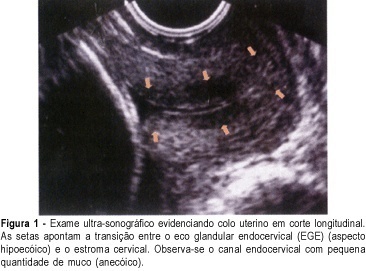Summary
Revista Brasileira de Ginecologia e Obstetrícia. 2004;26(3):193-200
DOI 10.1590/S0100-72032004000300004
PURPOSE: to verify the prevalence of two sonographic findings, the cervical gland area (CGA) feature and the cervical length of less than 20 mm, and to compare these with the risk for premature delivery in pregnant women between 21 and 24 weeks' gestation. METHOD: this was a prospective, cross-sectional study in which 361 women were consecutively examined by transvaginal ultrasonography. Müllerian or other malformations, multiple gestations, fetal death, olygo- or polyhydramnios, marginal placenta previa, and conization, cerclage, amputation or other surgical procedures in the cervix, prior to or during pregnancy, were exclusion criteria. After the abdominal ultrasonographic morphological examination, we used transvaginal ultrasonography to measure the cervical length and to observe the presence of hyper- or hypoechoic area next to the endocervical canal, a feature characteristic of endocervical epithelium glands which is called CGA (cervical gland area). Qualitative variables are expressed as absolute and relative frequency. Quantitative variables are expressed as mean, median, standard deviation, minimum, and maximum values. Association between qualitative variables was detected by the c² test or by the Fisher exact test. For each variable, the relative risk and the 95% confidence interval (CI) were calculated. Logistic regression analysis was used to calculate the predictive values for premature delivery. Significance level was 95% (alpha = 5%), with descriptive (p) values equal or lower than 0.05 considered significant. RESULTS: spontaneous preterm delivery occurred in 5.0% of the patients. Cervical length was up to 20 mm in 3.3% of all studied patients and in 27.8% of those who delivered spontaneously before the end of the pregnancy. Absence of the CGA was detected in 2.8% of all patients and in 44.4% of the women who eventually developed spontaneous preterm labor. There was a statistically significant association of absence of CGA with short cervical length (p<0.001). Absence of CGA was strongly associated with spontaneous preterm delivery (relative risk of 28.57, 95% CI 14.40-56.68). CONCLUSION: the absent CGA feature is a new morphological ultrasonographic parameter that is useful in the prediction of spontaneous preterm delivery in single gestations. Our results show that the parameter can be used as an indicator of risk for premature delivery, to be confirmed by future research.
